Despite the colder temperatures, the winged creatures are still out in abundance, as evidenced by this week’s submissions. Our pollinators are taking advantage of the last few blooming flowers while they still can (the rabbitbrush near our office still boasts a dozen species on a daily basis), and lepidopteran larvae are filling up before they go dormant for winter. It won’t be long before What’s Buzzin’ does the same, so go observe while you still can!
Header Photo: Paddle-tailed Darner (Aeshna palmata) Kelly Dix, September 6th, 2023. Bass Creek, Florence, MT.

Small Ranunculus
Hecatera dysodea
This beautiful Eurasian moth was accidentally introduced to North America on the east side of the Cascades in Oregon around 2003. It has since spread outside of the Pacific Northwest, east to Utah and Colorado. The moths fly from August and September here in North America, but are on the wing from March to September in Europe. Found in disturbed roadside, urban, and agricultural habitats at low elevations, caterpillars are specialists on wild lettuce in the aster family. Larvae have been commonly found on another introduced species, prickly lettuce.
Brenna Shea, August 29th, 2023. Missoula, MT.
Common Wood Nymph
Cercyonis pegala
These butterflies can be found in southern Canada and across most of the United States except much of the Southwest and Texas, southern peninsular Florida, and northern Maine. Their appearance varies greatly across the country. In the southeast, it has a large yellow patch on both surfaces of the forewing. In the west, it may have a pale yellow patch or may be lacking one entirely. All have two eyespots on each forewing. The eyespots are generally about the same size or the lower eyespot might be slightly larger. They can be found in large, sunny, grassy areas including prairies, open meadows, bogs, and old fields.
Kelly Dix, August 26th, 2023. Lake Como, Darby, MT.
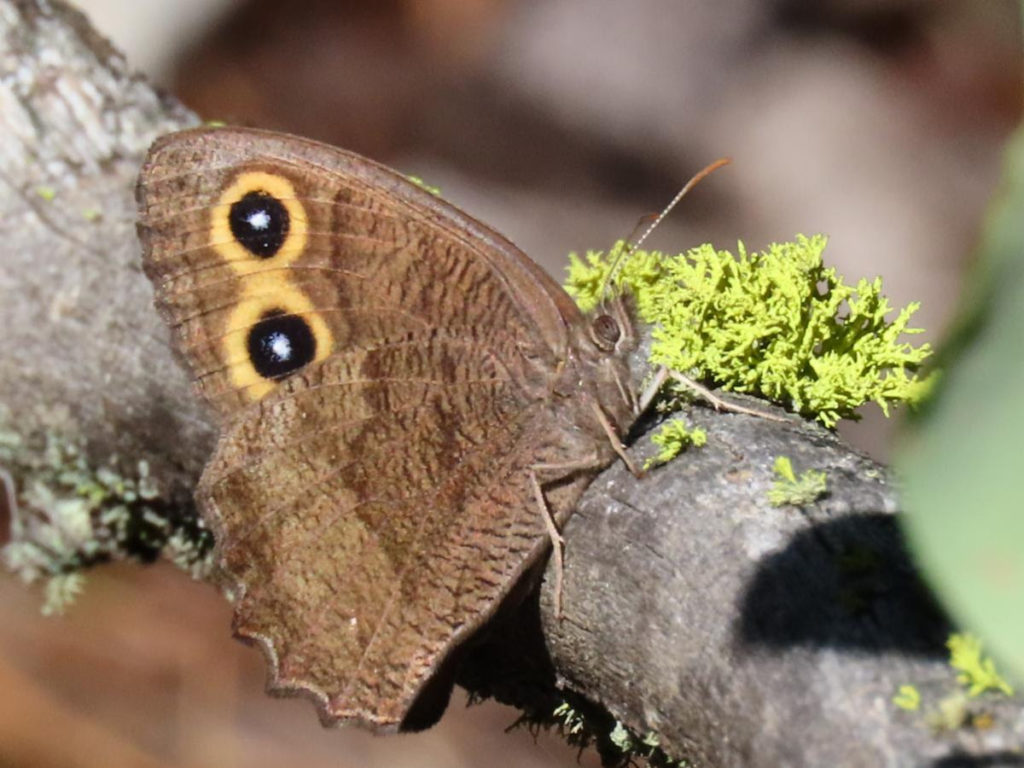
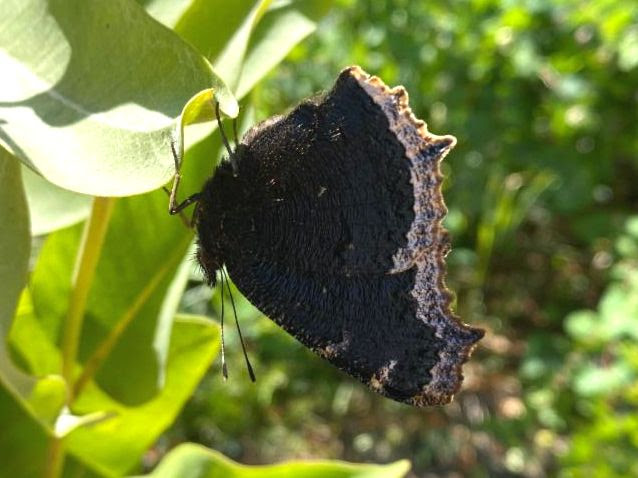
Mourning Cloak
Nymphalis antiopa
Our state butterfly is back! The mourning cloak is one of the few butterflies in our region that overwinters in its adult stage. In the spring, the adult butterflies emerge to mate and lay their eggs. They go through an initial dormant period through the summer, then re-emerge in the fall. The first generation will die off, while the second generation persists into the following year. With a year-long lifespan, they are one of the longest-lived butterflies.
Brenna Shea, August 29th, 2023. Missoula, MT.
Common Drone Fly
Eristalis tenax
The Drone Fly was introduced to North America from Eurasia prior to 1874 and is now found throughout most of the world. The adults are European Honey Bee (Apis mellifera) mimics, and quite sweet looking, while the larvae, called rat-tailed maggots, are a bit harder on the eyes. But as the saying goes, beauty is in the eye of the beholder. And that long tail-like tube serves an important purpose. Larvae live in stagnant water filled with decaying vegetation (small ponds, ditches, drains) or in wet dung, and that “tail” reaches the surface so they are able to breathe. Larvae feed on rotting organic material, while the adults prefer nectar.
Brenna Shea, September 1st, 2023. Missoula, MT.
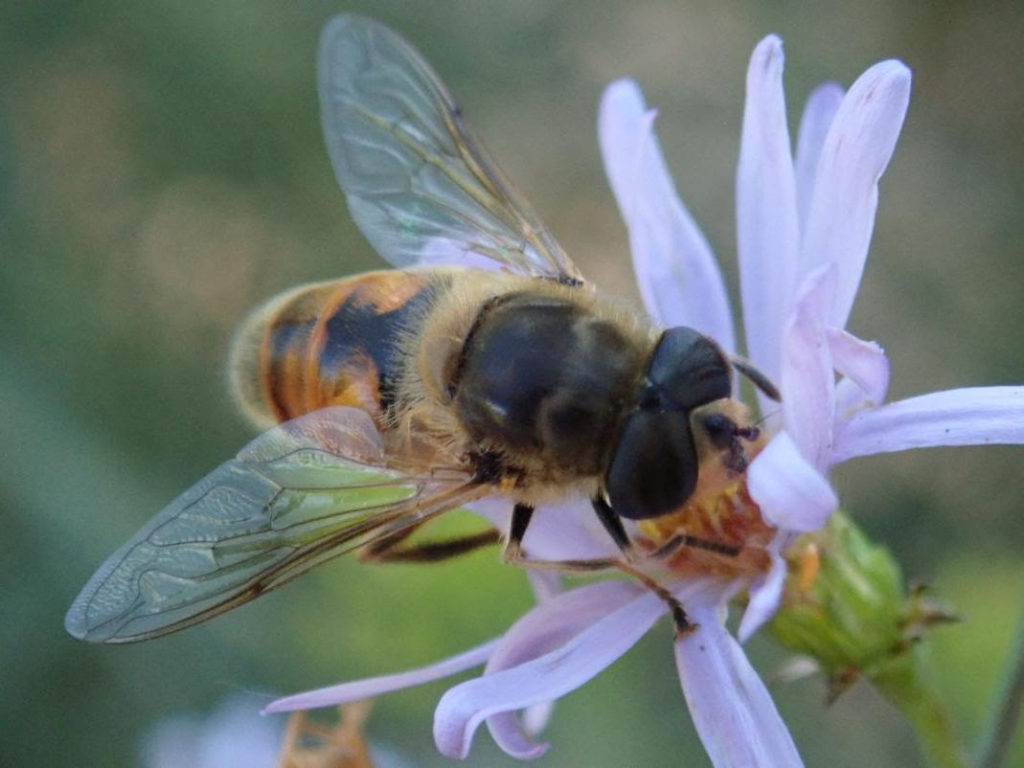
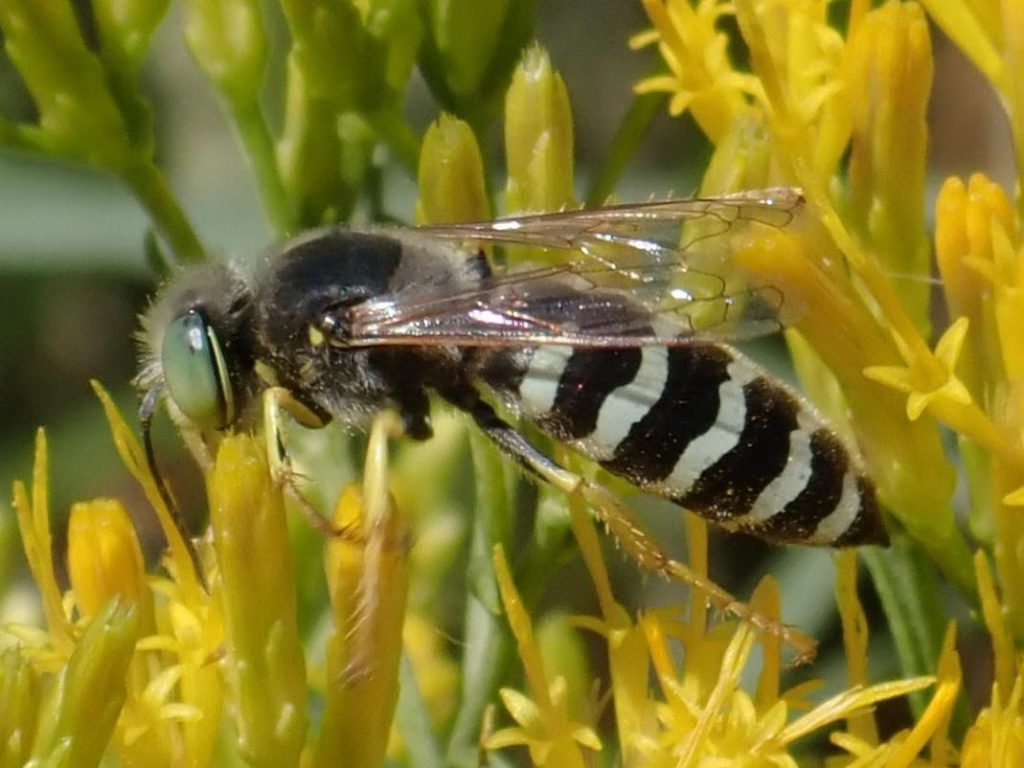
American Sand Wasp
Bembix americana
As its name suggests, the American sand wasp is widespread across North America, digging their shallow, solitary nests in loose sand and soil. Like many predatory wasps, the adults feed on nectar but prey on insects (usually flies) to feed their offspring. They lay an egg in a single chamber and then supply it with prey items. If conditions are right, several females may nest in close proximity, making them easy targets for parasitoids. However, in a strange turn, female wasps may prey on their parasites, an uncommon occurrence in nature.
Brenna Shea, September 1st, 2023. Missoula, MT.
Large Gray Dagger Moth
Acronicta insita
Acronicta insita is another great example of a fuzzy caterpillar best observed with eyes only. Their hairs are particularly irritating and are said to be hollow and contain toxins. Though largely absent from the Great Plains, they are found throughout the northern United States. This individual will spin a tough cocoon of silk and hair, then overwinter in its pupal stage. The adults emerge in the spring and are on wing from roughly May to August, but their flight period depends heavily on location.
Jenn Worrell, September 5th, 2023. Rattlesnake National Recreation Area & Wilderness, Missoula, MT.

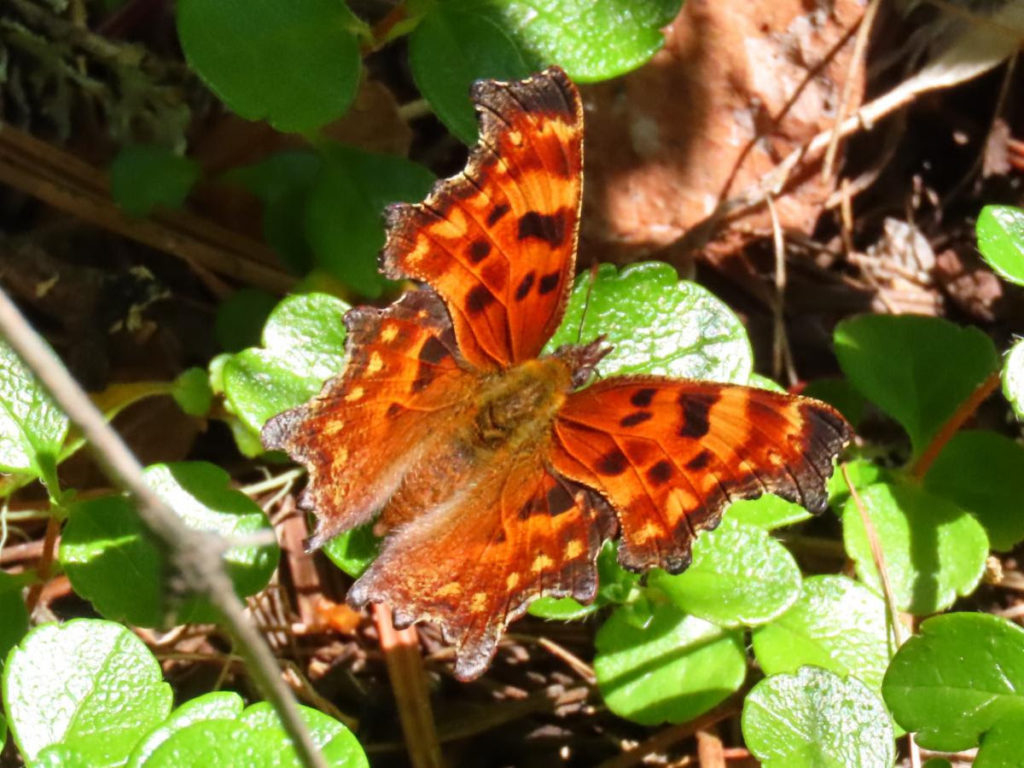
Oreas Comma
Polygonia oreas
Like all comma butterflies, the Oreas comma has a conspicuous white mark on the underside of its wings that resembles a comma. This species is found in the west, from southern British Columbia to northern California, in redwood and mountain pine forests. The adults feed on sap and rotting fruit and are rarely seen nectaring on flowers.
Kelly Dix, August 28th, 2023. Bass Creek, Florence, MT.
White Underwing Moth
Catocala relicta
This is the only underwing in North America with white and black hindwings. Others are usually black with brightly-colored bands of orange, yellow, pink, or red, with a number sporting all-black hindwings. Underwings rest by day, camouflaged on the bark of tree trunks. This species ranges widely, living in forests coast to coast. In Montana, white underwings fly in August and September.
Wendy Brooke, September 4th, 2023. Missoula, MT.


Pearly-winged Lichen Moth
Crambidia casta
Moths are often named for traits exhibited by their adult form OR their larval form – but rarely both. The pearly-winged lichen moth is an exception. Its name comes from the pearly white forewings of the adult, and their larval food source – lichens. They are found in the northern United States and southern to central Canada in dry, open woodlands and prairie riparian areas.
Brenna Shea, September 1st, 2023. Missoula, MT.